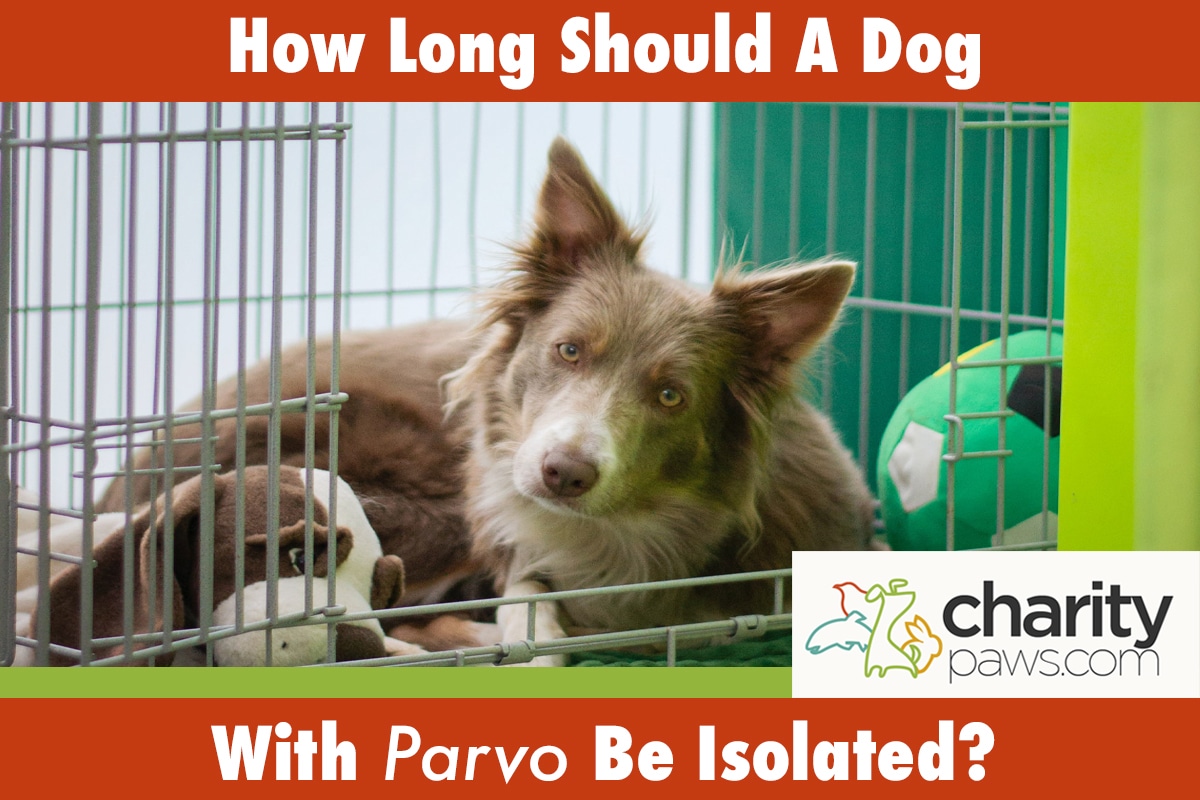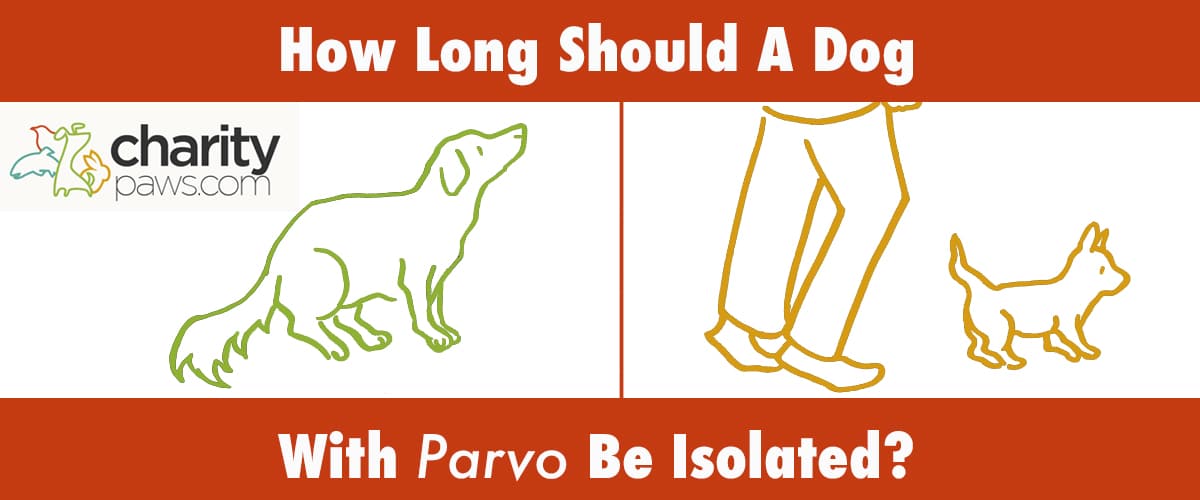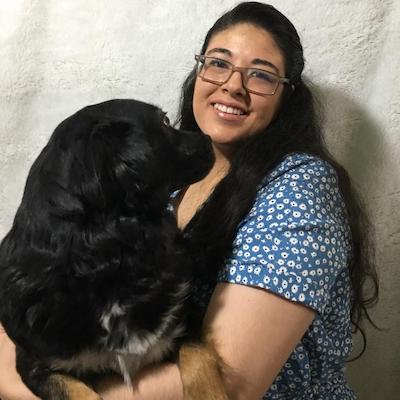Canine parvovirus, or parvo, as it is better known, is a viral disease that has the potential to affect all dogs.
It spreads easily and primarily strikes the gastrointestinal system and causes severe symptoms that are oftentimes deadly.
There is no cure for parvo, as it is a virus and the dog’s own immune system has to get rid of it, but there is some hope of recovery with the proper veterinary attention.
There is also a vaccine available that can help prevent dogs from contracting parvovirus.
How Does Parvo Spread?

Parvovirus can be found just about anywhere.
There is no need for direct contact from one dog to another for it to spread, as the virus can be carried in and out of the home on a person’s skin, clothes, shoes, and other objects.
As a consequence, all dogs that have not been fully vaccinated are at greater risk of infection.
Places where there is higher dog traffic, such as grooming facilities, dog parks, and veterinary clinics prove to be even higher-risk locations for infection.
Once infected, dogs usually start developing symptoms an average of 5 to 7 days after they are exposed, but can take up to two weeks.
Symptoms Of Canine Parvovirus
Signs of parvo commonly observed in dogs include:
- Low Energy
- Poor Appetite
- Fever
- Vomiting
- Diarrhea
Symptoms such as bloody diarrhea develop as a result of GI tract inflammation and shedding.
The protective barrier that normally prevents bacteria from the intestines to enter the body’s circulatory system is then broken down, and that puts dogs with parvo at a higher risk for septicemia, which is when bacteria enters the bloodstream.
The loss of liquids due to vomiting and diarrhea, along with a high body temperature, further causes infected dogs to become dehydrated.
The bone marrow is also affected, and the dog’s white blood cell count is greatly reduced, making it even more difficult to fight off the virus and any secondary bacterial infections.
Any dog that is exhibiting some or all of the above symptoms should be examined by a vet as soon as possible, as septicemia and dehydration can be fatal, oftentimes within two to three days.
What Treatment Options Are There For A Dog With Parvovirus?
Parvovirus is diagnosed by obtaining a swab sample from the dog’s rectum and using something called an ELISA test to determine if they are positive for parvo.
This is usually done in the examination room and takes about 15 minutes to get the results back.
Once diagnosed, the veterinarian will typically provide you with two options to treat your pup: hospitalization or at-home care.
There is no direct treatment to cure parvo.
Instead, treatment is focused on keeping the patient stabilized and supporting the immune system so that it can do its job and eradicate the virus.
If hospitalized, your dog will be given continuous IV fluids to keep them hydrated as well as apply intravenous medications such as antibiotics (to prevent or eliminate secondary bacterial infections), pain medication, antiemetics for nausea and vomiting, and whatever else is necessary.
When they are ready to eat, they will also be offered special prescription food and supplements to aid in their recovery.
At-home care involves giving the same medication, but orally, and you will also need to give your dog oral fluids throughout the day as specified by your vet.
Some vets also offer daily outpatient care, where you can take your dog in every day to receive SQ fluids (fluids under skin) and injections in addition to the care that you are providing at home.
In the ideal situation, all dogs with parvovirus should be hospitalized, as they have a higher survival rate (80% to 90%), but that is not always a financial option.
In both cases, getting a diagnosis and treatment early on is key to improving the dog’s chances of survival.
What Dogs Are At Risk Of Contracting Parvo?
Puppies between the ages of 6 weeks to 6 months are at most risk of contracting parvo.
Their chances of becoming infected are increased even more if they are not completely vaccinated.
Adult dogs who have not been vaccinated or are partially vaccinated are also susceptible.
The MSD Veterinary Manual states that certain breeds are more predisposed to getting parvo such as:
- Rottweilers
- Dobermans
- Pit Bulls
- Springer Spaniels
- German Shepherds
Dogs in overcrowded or stressful environments such as kennels and shelters and/or are suffering from other infections (parasitic, bacterial, viral) are also vulnerable.
How Long Should A Dog With Parvo Be Quarantined?

Dogs who have been diagnosed with parvovirus are contagious for up to two weeks after their symptoms have cleared, so it is very important to isolate them from any other dogs in the home, especially puppies and those that aren’t fully immunized.
Furthermore, you should not take your pup to any public places before three weeks after recovery as an extra safety precaution.
In total, it may take up to 4 weeks for your dog to test negative for parvo and be completely cleared by your vet.
While isolation is mainly meant to protect other healthy pets, it should also be done with your dog’s comfort in mind.
You should find a quiet, spacious spot in your home that isn’t too hot or too cold and that you can readily access.
If necessary, you can even use a large pen or kennel to make sure that your dog won’t leave the space and contaminate other areas in your home.
Tips For Isolating Your Dog
Keep a close eye on your pup and visit them several times a day.
Pet them, talk to them, and encourage them.
It really does make a huge difference in their recovery.
Keep The Area Clean At All Times
Try to keep the area clean at all times.
If you are able to, you can place another pen or kennel in the same room, set it up with water, a bed, and potty pads so that you can transfer your dog when the area they are in needs to be cleaned.
You can use 1 part bleach to 30 parts of water to clean and disinfect the area.
Hygiene is very important in preventing secondary infections as well as keeping your dog as comfortable as possible.
Keep Laundry In A Designated Area
Use clothing that you are okay with leaving in the room with your dog for some time.
You can place a laundry basket in there and designate it for these garments.
This will reduce the chances of you taking the virus to other parts of your home.
Use Cleaner To Wipe The Floor And Your Shoes
Keep a plastic container with the same cleaning solution that you use to clean next to the door along with a towel on the floor.
You will want to use this solution to clean the floor and your shoes before heading out.
This way, you are less likely to carry around the virus on your shoes.
Wash Your Hands Frequently
Always wash your hands and any other parts of your body that you think may have been exposed.
You don’t want to risk spreading the virus to other areas of your home.
How Long Does Parvo Last In The Home And Yard?
On average, parvovirus stays active for up to a month within the home, and up to 7 months outdoors.
Parvo Can Survive – 1 Month Inside and 7 Months Outside
How long it will last in your yard depends on how much sun it is exposed to.
In the summertime, it may be as soon as 5 months, while it may take up to 7 months during the winter.
Please take this into consideration before introducing a new puppy or unvaccinated dog into your home.
How Can Parvovirus Be Prevented?
Immunization is the safest option for keeping dogs free of parvovirus.
Be sure to follow the vaccination protocol as recommended by your vet.
Missing a vaccine isn’t like when you miss an antibiotic dose or dewormer.
Missing a vaccine can be detrimental to your pup.
The vaccination schedule was created for a reason, after all.
Pet parents should also keep their adult pups current with their immunizations.
In young adults, the parvovirus vaccine is usually recommended once a year.
Veterinarians may sometimes switch older dogs to a vaccination schedule of every three years, but this depends on your veterinarian’s preference.
As long as your dog isn’t vaccinated, you should also avoid taking them to places such as:
- Dog parks
- Groomers
- Boarding/Day camp facilities
- Training classes
- Anywhere other dogs congregate
Yes, socialization is important, but there is plenty of time for that once your puppy is fully vaccinated.
If for any reason you have to take them in to any of these places, ask them about their policies.
Some places will require all dogs that enter the facility to be up to date on vaccines, deworming, and flea/tick preventatives, this is especially true for boarding facilities.
If your dog has been diagnosed with the virus, then you should take great care in avoiding these places as a courtesy to other dogs.
If you can, call your vet’s office before heading over so that they can prepare for your arrival.
They will usually set up a special room away from other dogs as an extra precaution.
If you decide to walk into a clinic, take someone with you, so that you can leave your dog in the car with them, while you let the receptionist know that you are there.
Finally, don’t allow your dog to get near feces on the ground when out for walks or playtime.
Parvo spreads via fecal matter that then extends onto the environment.
It is essential to keep them away from it as well as properly dispose of your own dog’s waste.
Despite proper vaccination, a small percentage of dogs do not develop protective immunity and can remain susceptible to infection.
This is very unlikely, but it is something everyone with a dog should be aware of.
As a responsible pet parent, all you can do is follow the above preventative measures as well as your veterinarian’s recommendations to keep your puppy as safe as possible from parvovirus.

